Fresh, aromatic, and packed with health benefits — ginger (Zingiber officinale) is a kitchen staple loved worldwide for its spicy flavor and medicinal properties. While traditionally cultivated in tropical fields, the good news is that you don’t need acres of land to enjoy homegrown ginger. Ginger thrives beautifully in containers, making it perfect for balconies, patios, windowsills, and small urban spaces.
If you’re new to gardening or limited on space, growing ginger in containers is surprisingly simple and incredibly rewarding. In this complete guide, you’ll learn everything you need to know about how to grow ginger in containers — from selecting the right rhizomes to planting, care, and harvesting.
Why Grow Ginger in Containers?
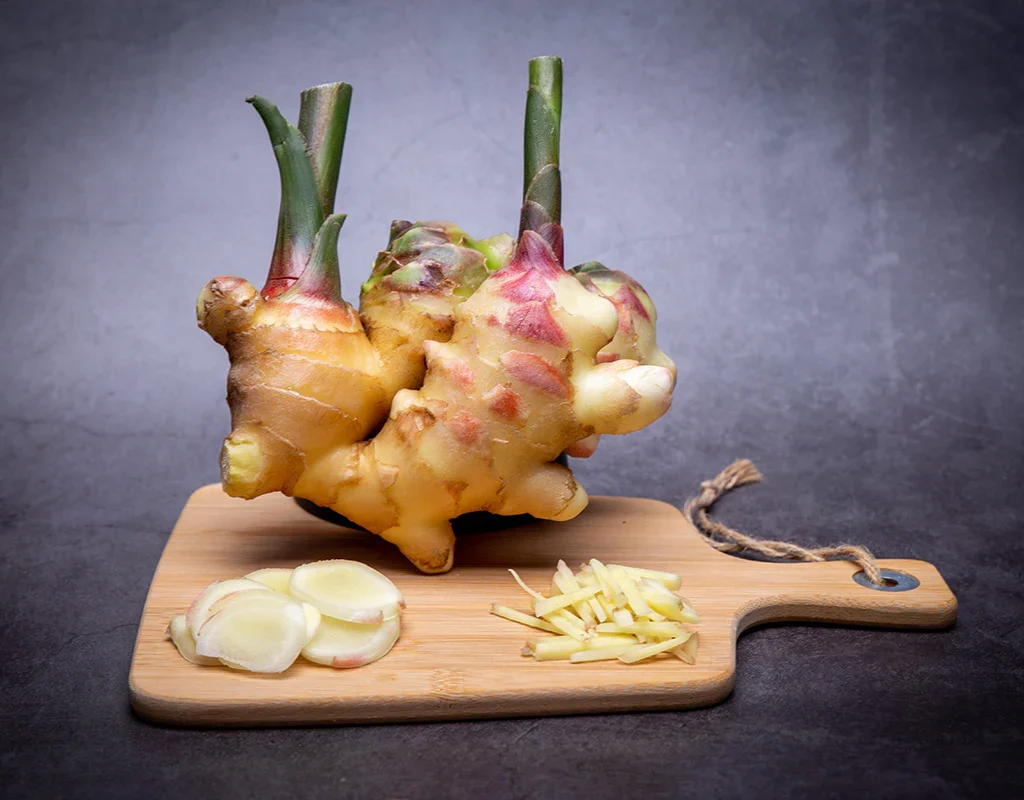
Growing ginger in pots offers a host of advantages:
- Space-saving: Ideal for small patios, balconies, and windowsills.
- Portable: Move pots indoors during colder months.
- Controlled Environment: Easier to manage soil quality, moisture, and light.
- Fewer Pests & Diseases: Container-grown plants are typically less susceptible to soil-borne problems.
- Fresh, Chemical-Free Ginger: Harvest tender, organic ginger whenever you need it.
What You’ll Need
Before planting, gather the following:
- Fresh ginger root (preferably organic)
- A wide, shallow container with drainage holes (minimum 12 inches deep and wide)
- Well-draining potting mix
- Organic compost or aged manure
- Watering can or hose with a gentle nozzle
- Mulch (optional)
Step-by-Step: How to Grow Ginger in Containers
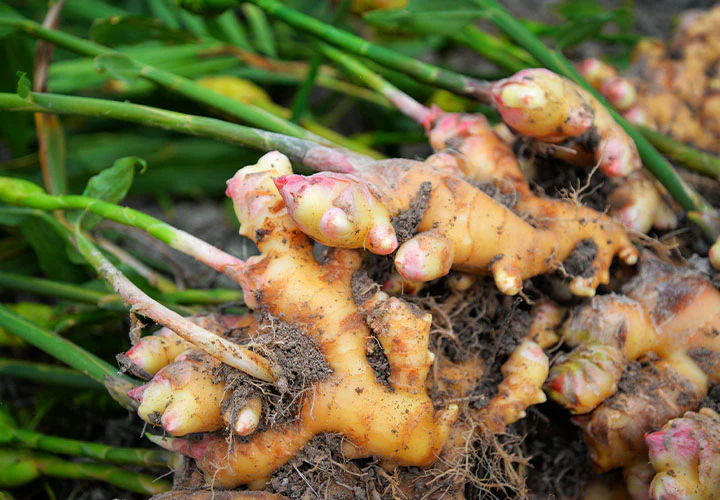
Step 1: Choose Healthy Ginger Rhizomes
Look for:
- Firm, plump ginger roots
- Smooth skin with visible ‘eyes’ or growth buds
- Avoid shriveled or moldy pieces
Tip: Organic ginger is ideal since conventionally grown ones may be treated with growth inhibitors.
Step 2: Prepare the Ginger Pieces
- Cut large ginger roots into 1-2 inch chunks, ensuring each has at least one visible growth bud.
- Allow cut pieces to air-dry in a shaded area for 24-48 hours. This prevents rot when planted.
Step 3: Select the Right Container
Ginger grows horizontally, so choose a wide, shallow container at least 12 inches deep and wide with good drainage holes.
Recommended materials:
- Clay pots (porous and breathable)
- Plastic pots (lightweight and affordable)
Ensure containers are sturdy enough to support the growing plant.
Step 4: Prepare the Potting Mix
Ginger thrives in light, loose, and nutrient-rich soil.
Ideal soil mix:
- 60% quality potting soil
- 20% coarse sand or perlite for drainage
- 20% well-rotted compost or aged organic manure
Avoid clay-heavy or waterlogged soil.
Step 5: Plant the Ginger
- Fill the container with the soil mix, leaving a 2–3 inch space at the top.
- Place the ginger pieces horizontally with growth buds facing upward.
- Cover with 1–2 inches of soil.
- Water gently to settle the soil.
Space ginger pieces 6-8 inches apart if planting multiple in a large container.
Container Ginger Care Essentials
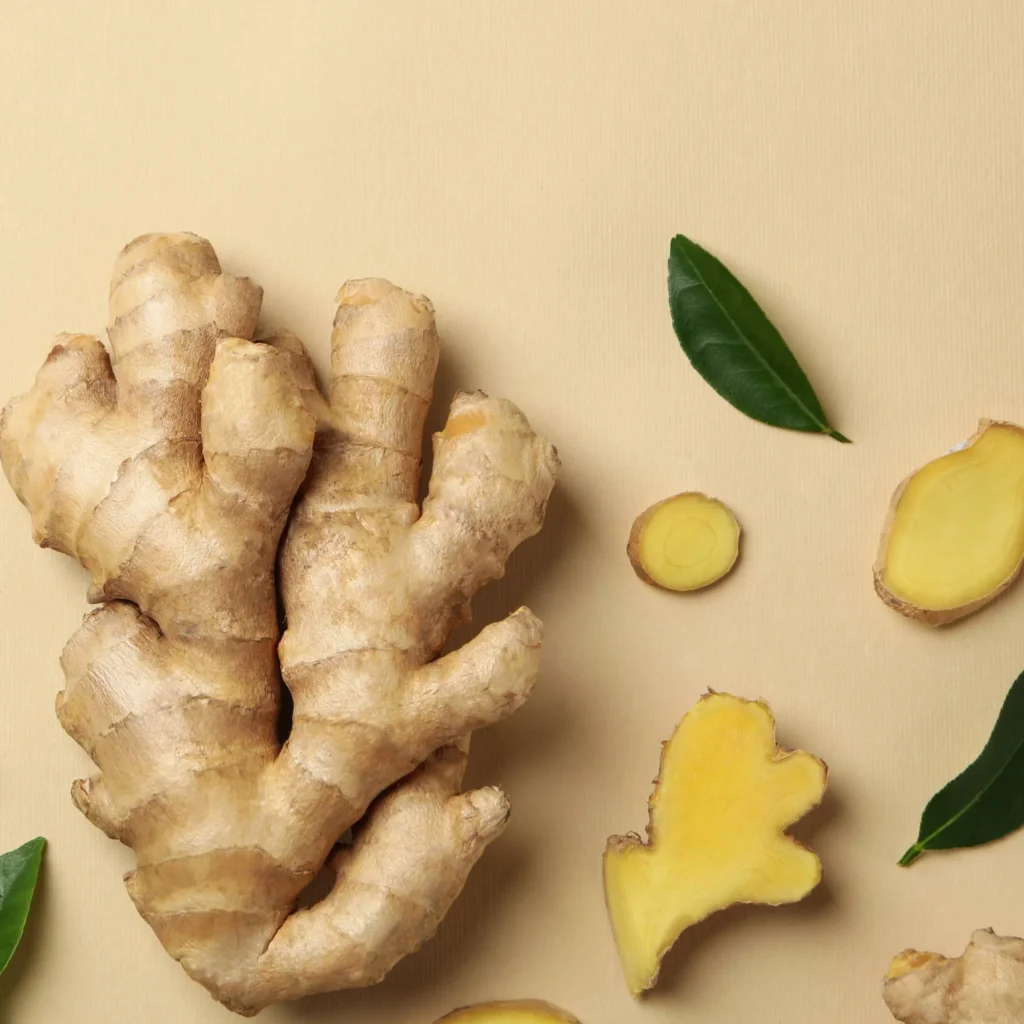
Light Requirements
Ginger prefers:
- Partial shade or indirect sunlight
- 4–6 hours of dappled sunlight daily
Avoid harsh afternoon sun, which can scorch leaves. Indoors, a south or west-facing window works well.
Watering
Keep soil consistently moist but never soggy.
Watering tips:
- Water when the top 1 inch of soil feels dry.
- Reduce watering in winter when the plant goes dormant.
- Mist the leaves occasionally for added humidity.
Warning: Overwatering causes root rot — the most common issue for ginger in containers.
Feeding
Feed your ginger regularly for healthy growth:
- Use a balanced organic liquid fertilizer (like seaweed or fish emulsion) every 4-6 weeks.
- Add compost or organic mulch every couple of months to enrich soil nutrients.
Temperature
Ideal temperature: 68–86°F (20–30°C).
Move pots indoors or to a greenhouse if temperatures drop below 50°F (10°C).
Mulching
Apply a 2-inch layer of organic mulch (straw, dry leaves, or grass clippings) around the plant:
- Retains moisture
- Keeps soil cool
- Suppresses weeds
Harvesting Ginger in Containers
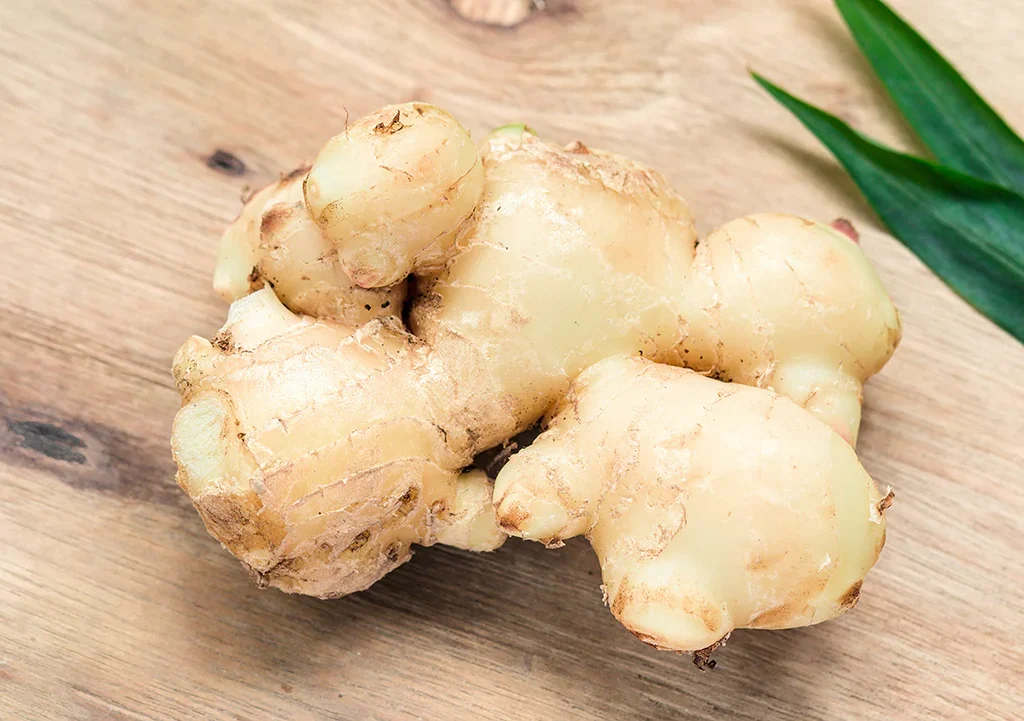
Ginger takes 8–10 months to mature fully but can be harvested earlier for young, tender rhizomes.
Early Harvest:
After 4–6 months, gently dig around the edges and cut a small section of rhizome. Re-cover the rest to keep growing.
Full Harvest:
When leaves start yellowing and dying back:
- Stop watering for a week
- Carefully tip the pot over
- Shake off excess soil
- Cut off the leaves and clean the rhizomes
Storing Fresh Ginger
- Fresh: Store in a cool, dry place for up to 3 weeks.
- Refrigerated: Wrap in paper towels and store in a zip-lock bag for up to 3 months.
- Frozen: Peel, chop, and freeze for 6 months or longer.
- Dried: Slice thinly and dry in a dehydrator or oven.
Propagating New Ginger Plants

After harvesting, you can replant a few healthy rhizome pieces with growth buds to start a new crop. Use the same method as before, and you’ll have a continuous supply of fresh ginger at home.
Common Problems & Solutions
| Problem | Cause | Solution |
|---|---|---|
| Root Rot | Overwatering, poor drainage | Use well-draining soil; reduce watering |
| Yellowing Leaves | Excess sunlight or poor nutrition | Provide filtered light; feed compost tea |
| Aphids / Mealybugs | Warm, moist conditions | Spray neem oil or soapy water |
Can You Grow Ginger Year-Round in Containers?
Yes!
- In warm regions, keep containers outdoors all year.
- In colder climates, move indoors during fall and winter.
- Resume watering and fertilizing in spring.
Ginger goes dormant in winter — the leaves die back, but the rhizome stays alive beneath the soil, ready to regrow in warmer months.
Health Benefits of Fresh Homegrown Ginger
Adding freshly harvested ginger to your diet brings numerous health perks:
- Boosts immunity
- Aids digestion
- Eases nausea
- Reduces inflammation
- Relieves muscle soreness
- Supports heart health
Plus, nothing beats the flavor of freshly picked ginger in teas, stir-fries, curries, and desserts.
Final Thoughts
Growing ginger in containers is a rewarding and beginner-friendly gardening project. With minimal effort, even small-space gardeners can enjoy a steady supply of fresh, organic, and chemical-free ginger at home.
By selecting quality rhizomes, using rich, well-draining soil, providing consistent moisture, and placing your containers in partial shade, you’ll be harvesting tender, aromatic ginger in no time.
So why not give it a try? Pick up a plump piece of ginger from your local market today and start your own mini ginger garden right on your balcony or windowsill!
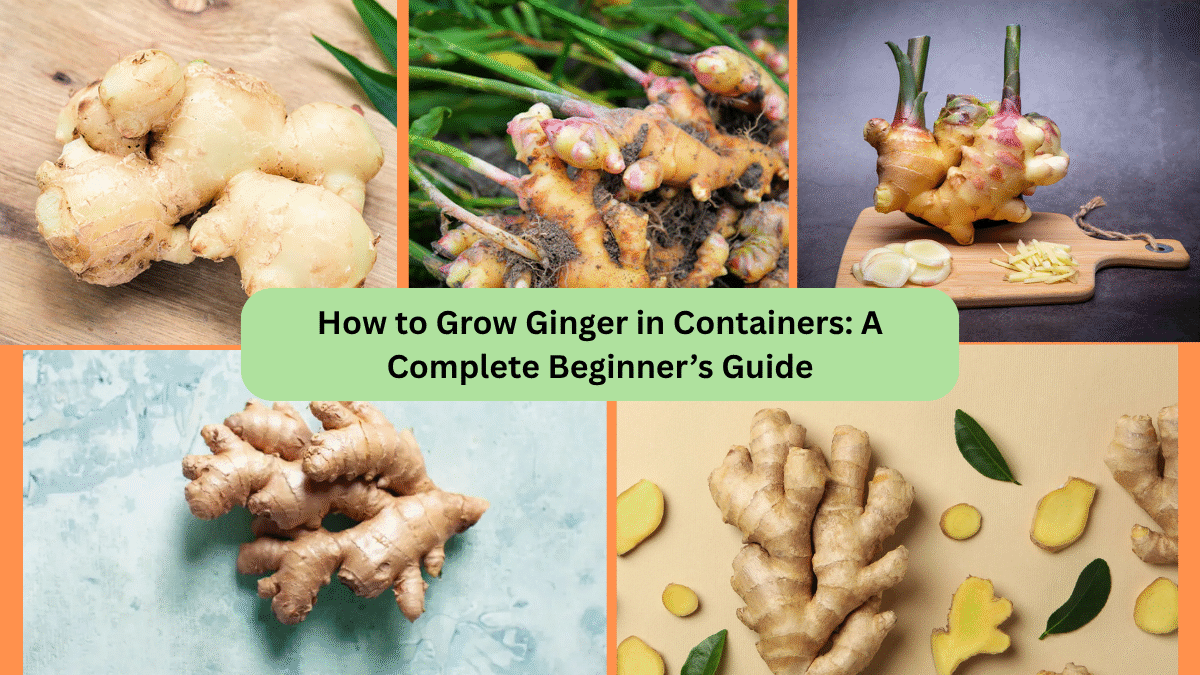



Leave A Comment